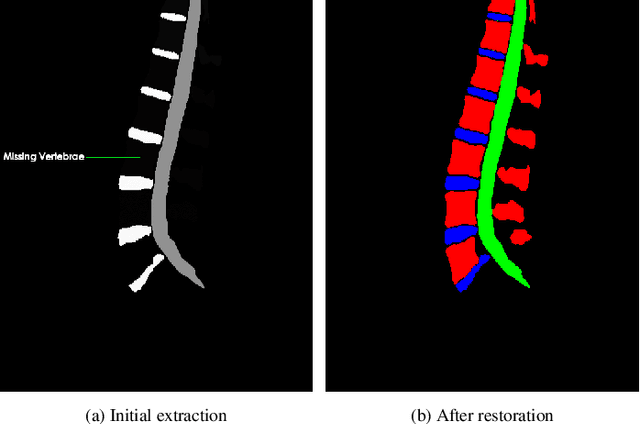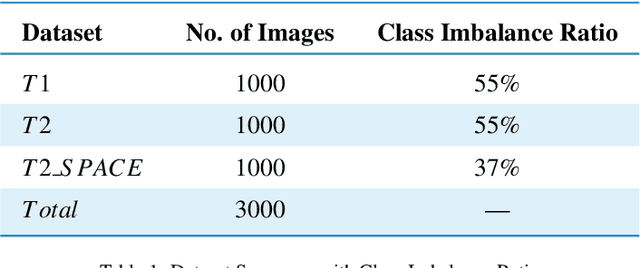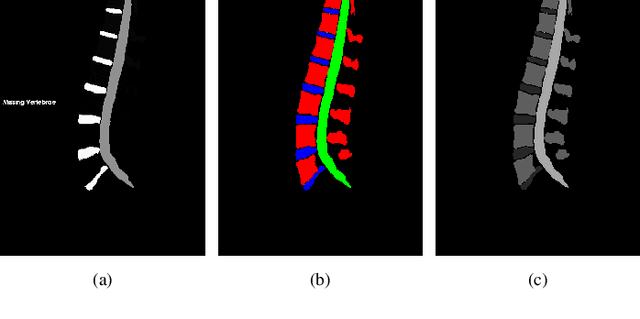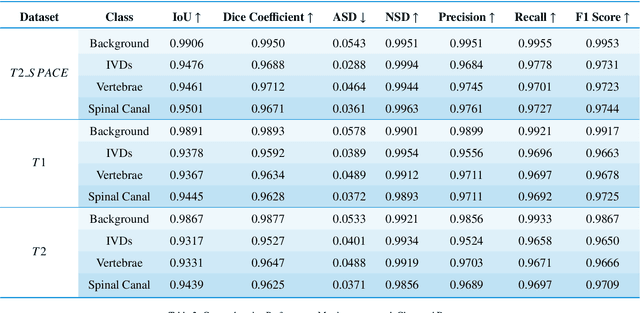Md. Zahirul Islam Nahid
Pioneering Precision in Lumbar Spine MRI Segmentation with Advanced Deep Learning and Data Enhancement
Sep 09, 2024



Abstract:This study presents an advanced approach to lumbar spine segmentation using deep learning techniques, focusing on addressing key challenges such as class imbalance and data preprocessing. Magnetic resonance imaging (MRI) scans of patients with low back pain are meticulously preprocessed to accurately represent three critical classes: vertebrae, spinal canal, and intervertebral discs (IVDs). By rectifying class inconsistencies in the data preprocessing stage, the fidelity of the training data is ensured. The modified U-Net model incorporates innovative architectural enhancements, including an upsample block with leaky Rectified Linear Units (ReLU) and Glorot uniform initializer, to mitigate common issues such as the dying ReLU problem and improve stability during training. Introducing a custom combined loss function effectively tackles class imbalance, significantly improving segmentation accuracy. Evaluation using a comprehensive suite of metrics showcases the superior performance of this approach, outperforming existing methods and advancing the current techniques in lumbar spine segmentation. These findings hold significant advancements for enhanced lumbar spine MRI and segmentation diagnostic accuracy.
 Add to Chrome
Add to Chrome Add to Firefox
Add to Firefox Add to Edge
Add to Edge